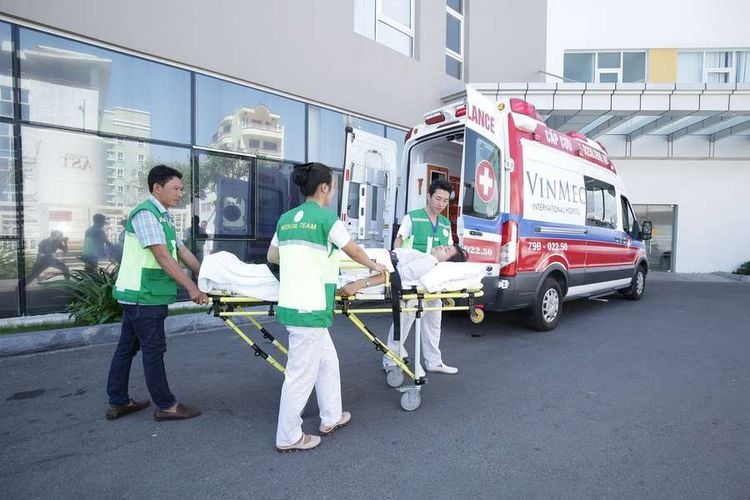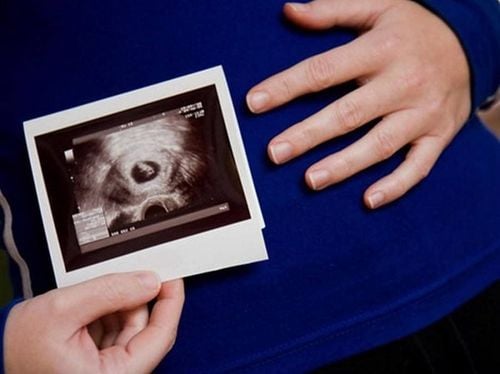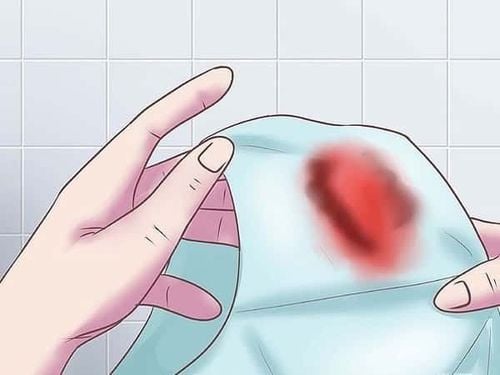This is an automatically translated article.
The article was professionally consulted with Doctor Department of Pediatrics - Neonatology, Vinmec Hai Phong International General Hospital.
Cerebral and meningeal hemorrhage in children is completely different from that in adults and the elderly in terms of causes, disease manifestations, treatment and prevention. The disease is quite common in countries around the world as well as in our country. This is a very serious disease, with a high mortality rate, from 25-40% of children affected, the rate of sequelae is up to 40-50%.
1. Why do children have cerebral hemorrhage?
Cerebral or meningeal hemorrhage is bleeding in the brain or meninges caused by the rupture of any blood vessel in the brain. The disease has a high mortality rate and leaves severe sequelae.
Brain hemorrhage in children is a serious and acute illness caused by many causes such as traumatic brain injury due to traffic accidents, daily life accidents, hematologic diseases causing other coagulation disorders... in which Blood clotting disorder due to vitamin K deficiency is the main cause.
According to research, Vitamin K is involved in the synthesis of some clotting factors in the liver. Without these elements, the body is prone to bleeding. 90% of children with cerebral hemorrhage due to vitamin K deficiency usually occur at 45-60 days of age, above this age.
Causes of vitamin K deficiency in young children are due to:
Vitamin K is provided from mother to fetus through the placenta, this amount is very small, and the main part of vitamin K that infants receive through breast milk. However, vitamin K in breast milk is lower than cow's milk, artificial milk powder. The amount of vitamin K in breast milk varies from about 20-30 micrograms/liter; while in artificial milk powder, the amount of vitamin K is over 50 micrograms / liter. The mother's milk is not nourished in the last months of pregnancy, in mothers who follow a strict postpartum diet such as abstaining from fat and oil, the amount of vitamin K in breast milk is less. In young children after birth, at one month old, bacteria are not able to synthesize vitamin K in the intestines enough, so young children are more susceptible to vitamin K deficiency leading to brain and meningeal hemorrhage than older children. Young children who have to take antibiotics early, have digestive disorders also make the source of vitamin K synthesized in the intestine less. Mothers who took medications such as rifamycin, isoniazid, or barbiturates or were exposed to dioxin during pregnancy were also more likely to bleed than babies of mothers who did not take the drug during pregnancy.
Trắc nghiệm: Huyết áp của bạn có đang thực sự tốt?
Huyết áp cao hay thấp đều ảnh hưởng đến tình trạng sức khỏe con người. Để biết tình trạng huyết áp của bạn có thực sự tốt không, hãy làm bài trắc nghiệm sau đây để đánh giá.2. Dangerous complications of bleeding in the brain, meninges in children
Children with cerebral hemorrhage, meninges, although actively treated, but the mortality rate is very high from 25-40%, or leaving sequelae 40-50%.
The most common sequelae in children with cerebral hemorrhage include:
Seizures; Motor paralysis; Mental retardation; Hydrocephalus, causing lifelong disability in children. Hemorrhagic disease in children is so dangerous, but it is completely preventable and curable, with few sequelae if the disease is detected early.

3. Signs to recognize bleeding in the brain, meninges in children
Hemorrhage of the brain and meninges in children is mainly due to vitamin K deficiency. The disease occurs very quickly and has the following signs:
Suddenly, the child's skin turns pale, stops feeding, vomits, then the child cries and groans. The child has convulsions, loss of consciousness, and coma. The child continues to have generalized or partial convulsions of a limb, face or body, drooping eyelids. Many children have irregular breathing or intermittent pauses in breathing. The patient's condition is very critical at the moment. If you pay close attention, the mother can notice that the baby's fontanel is swollen and stretched. There are some signs of bleeding on the baby's skin, such as bruising, in the first week after birth, there is prolonged umbilical bleeding and if the child has injected, the injection site will be bruised. When there is bleeding in the skin, in the umbilicus, at the injection site, the child should be taken to the doctor early to detect bleeding easily and be treated early, so as not to cause bleeding in the brain or meninges. If the above symptoms occur at about 30-60 days of age, it can be immediately suspected of cerebral hemorrhage, meninges. Blood tests showed anemia, a lumbar puncture showed a pink discharge.
4. Treatment and prevention of cerebral and meningococcal hemorrhage in children

Hemorrhage of the brain, meninges in young children is a serious disease that must be taken to hospital for emergency treatment
4.1. Treatment of cerebral and meningococcal haemorrhage Cerebral and meningeal hemorrhage in young children is a serious disease that must be treated as an emergency in the hospital, cannot be treated at home or in the office, so when there are suspicious symptoms, If there is a suspicion of cerebral hemorrhage or meningoencephalitis as mentioned above, the family must quickly take the child to the hospital for a definitive diagnosis.
If it is due to vitamin K deficiency, the child must be actively treated with vitamin K injection, blood transfusion and care, special monitoring, anticonvulsant, breathing support and nutrition because the child is in a coma, unable to suckle.
After hemostasis, the meningeal bleeding is stable, if there is a hematoma, surgical intervention may be required to remove the hematoma. With urgent and expensive treatment methods as above, but the mortality and sequelae rates are still high, so the prevention of cerebral and meningeal hemorrhage for young children is very important.
4.2. Prophylaxis measures for cerebral and meningococcal haemorrhagic disease in infants and young children is completely preventable by the fact that mothers from the time of pregnancy should pay attention to health care. for yourself as supplementing vitamin K through foods such as green vegetables, cereals, milk, eggs, tofu, lean pork, beef...
After giving birth, vitamin K should be provided to all Newborns One dose of vitamin K1 1mg is given to all newborns.
As a key area of Vinmec Health System, Pediatrics Department always brings satisfaction to customers and is highly appreciated by industry experts with:
Gathering a team of leading pediatricians and doctors : consists of leading experts with high professional qualifications (professors, associate professors, doctorates, masters), experienced, worked at major hospitals such as Bach Mai, 108.. Doctors All doctors are well-trained, professional, conscientious, knowledgeable about young psychology. In addition to domestic pediatric specialists, the Department of Pediatrics also has the participation of foreign experts (Japan, Singapore, Australia, USA) who are always pioneers in applying the latest and most effective treatment regimens. . Comprehensive services: In the field of Pediatrics, Vinmec provides a series of continuous medical examination and treatment services from Newborn to Pediatric and Vaccine, ... according to international standards to help parents take care of their baby's health from birth to childhood. from birth to adulthood Specialized techniques: Vinmec has successfully deployed many specialized techniques to make the treatment of difficult diseases in pediatrics more effective: neurosurgery - skull surgery, stem cell transplantation. blood in cancer treatment. Professional care: In addition to understanding children's psychology, Vinmec also pays special attention to the children's play space, helping them to have fun and get used to the hospital's environment, cooperate in treatment, improve the efficiency of medical treatment.
Please dial HOTLINE for more information or register for an appointment HERE. Download MyVinmec app to make appointments faster and to manage your bookings easily.













